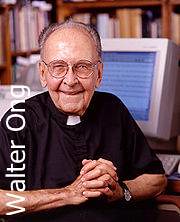Duluth, Minnesota (OpEdNews) July 31, 2025: In the present wide-ranging OEN article, I discuss the famous Swiss psychiatrist and psychological theorist Carl Gustav Jung (1875-1961) and his not so famous account of two kinds of thinking in Part One, Chapter II: "Two Kinds of Thinking" in his 1952 extensively revised and re-titled book titled Symbols of Transformation: An Analysis of the Prelude to a Case of Schizophrenia, second 1967 edition, translated by R. F. C. Hull (Princeton University Press, pp. 7-33).
Jung first published the chapter "Two Kinds of Thinking" as "Concerning the Two Kinds of Thinking" in his 1912 book in German that was translated into English as the book titled Psychology of the Unconscious by the American psychiatrist Beatrice M. Hinkle of Cornell University in 1916 (Moffat, Yard, and Company, pp. 8-41) - with an informative "Introduction to Psychoanalysis and Analytic Psychology" by Beatrice Hinkle (pp. vii-xlvi).
The original German title of Jung's 1912 book was Wandlungen und Symbole der Libido. So, symbols of libido (sexual energy, broadly conceived).
The backstory of Jung's 1912 book is important to note here in connection with his account of the "Two Kinds of Thinking." The two kinds of thinking are (1) fantasy thinking involving images and associative thinking and (2) directed thinking involving logic. In the present wide-ranging OEN article, I will honor the spirit of what Jung refers to as fantasy thinking involving images and associative thinking by engaging in wide-ranging associative thinking - as I have also done in numerous other OEN articles in which I have discussed Jung's account of the two kinds of thinking, including my OEN articles about the fantasy skits in mom-son porn videos that are available free on the internet.
See my OEN article "On Interpreting the Ubiquitous Mom-Son Porn on the Internet" (dated December 19, 2024; viewed 1,463 times as of July 29, 2025):
Now, in Jung's dangerous self-experiment, he experimented with a free-wheeling form of meditation that he came to refer to as active imagination. Jung's free-wheeling form of meditation involved images that he evoked from his personal unconscious and from the collective unconscious in his psyche. Jung's practice of this free-wheeling form of meditation was dangerous because it could cause him to experience a psychotic break in which the forces of his unconscious would overthrow his ego-consciousness. Jung understood this danger, and he undertook elaborate measures to avoid this danger by working through and processing the images that his free-wheeling fantasies evoked from his unconscious by writing out detailed accounts of those images and the associations that they called forth in his ego-consciousness in his Black Books - and by further working through and processing certain images in works of art that he made in his Red Book.
In 2021, W. W. Norton and Company published Jung's Black Books: 1913-1932: Notebooks of Transformation, edited by Sonu Shamdasani, translated by Martin Liebscher, John Peck, and Sonu Shamdasani, in seven handsome volumes.
In 2009, W. W. Norton and Company published Jung's Red Book: Liber Novus, edited by Sonu Shamdasani, translated by Mark Kyburz, John Peck, and Sonu Shamdasani, as a handsome oversized artbook with the works of art that Jung made to work through the striking fantasy images that his free-wheeling meditations had evoked from his unconscious.
In any event, Jung's various statements about the dangerous free-wheeling form of meditation known active imagination over the years have been collected in the volume titled Jung on Active Imagination. Edited by Joan Chodorow (Princeton University Press, 1997).
Now, when I was in the Jesuits (1979-1987), I made a 30-day directed retreat in silence (except for the daily conferences with the retreat director) following the Spiritual Exercises of the Spanish Renaissance mystic St. Ignatius Loyola (1491-1556), the founder of the Jesuit order (known formally as the Society of Jesus). It was one of the most memorable events of my life. In the meditation periods each day, the person on retreat meditates on the assigned biblical passage of the day. I refer to this kind of meditation as guided meditation - as distinct from the free-wheeling kind of meditation that Jung engaged in in his dangerous self-experiment.
For an English translation of the Spiritual Exercises of St. Ignatius Loyola, see The Spiritual Exercises of Saint Ignatius: A Translation and Commentary by George E. Ganss, S.J. (Institute of Jesuit Sources, 1992).
In 1939-1940, the prolific Carl Jung delivered a series of lectures on the Spiritual Exercises of St. Ignatius Loyola in 1939-1940. See the book Jung on Ignatius of Loyola's Spiritual Exercises : Lectures Delivered at the ETH Zurich: Volume 7: 1939-1940, edited by Martin Liebscher, translated by Caitlin Stephens (Princeton University Press, 2023).
In the early 1950s, Father Ong published two close studies of the language of St Ignatius Loyola: (1) "'A.M.D.G.' [Abbreviation of Ad Majorem Dei Gloriam (For the greater glory of God)]: Dedication or Directive?" in the now-defunct Jesuit-sponsored Review for Religious, volume 11, number 5 (September 15, 1952): pp. 257-264; and (2) "St. Ignatius' Prison-Cage and the Existentialist Situation" in the Jesuit-sponsored Theological Studies, volume 15, number 1 (March 1954): pp. 34-51.
Next Page 1 | 2 | 3 | 4 | 5 | 6
(Note: You can view every article as one long page if you sign up as an Advocate Member, or higher).





